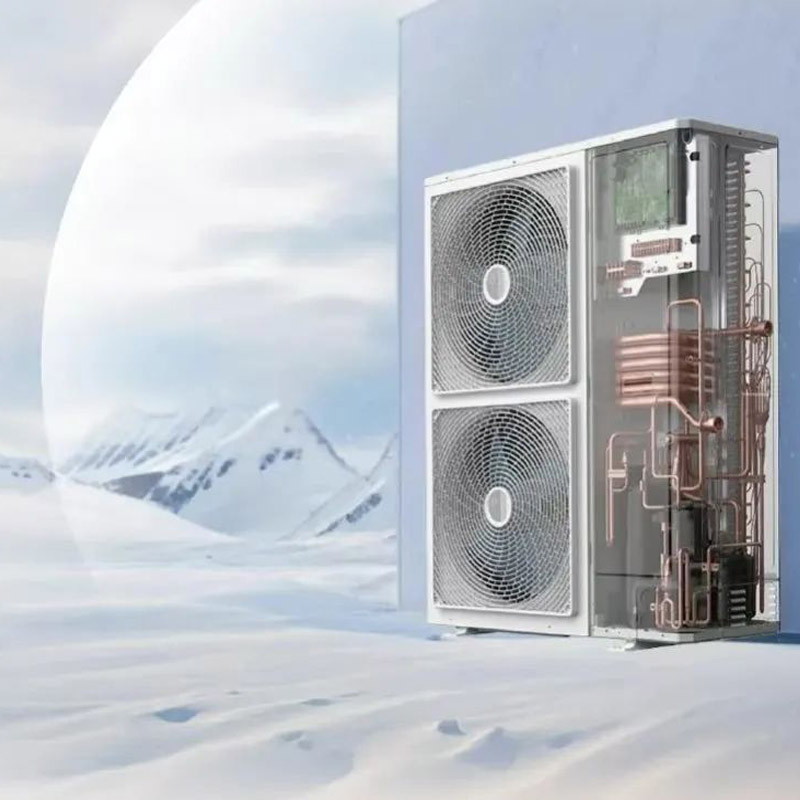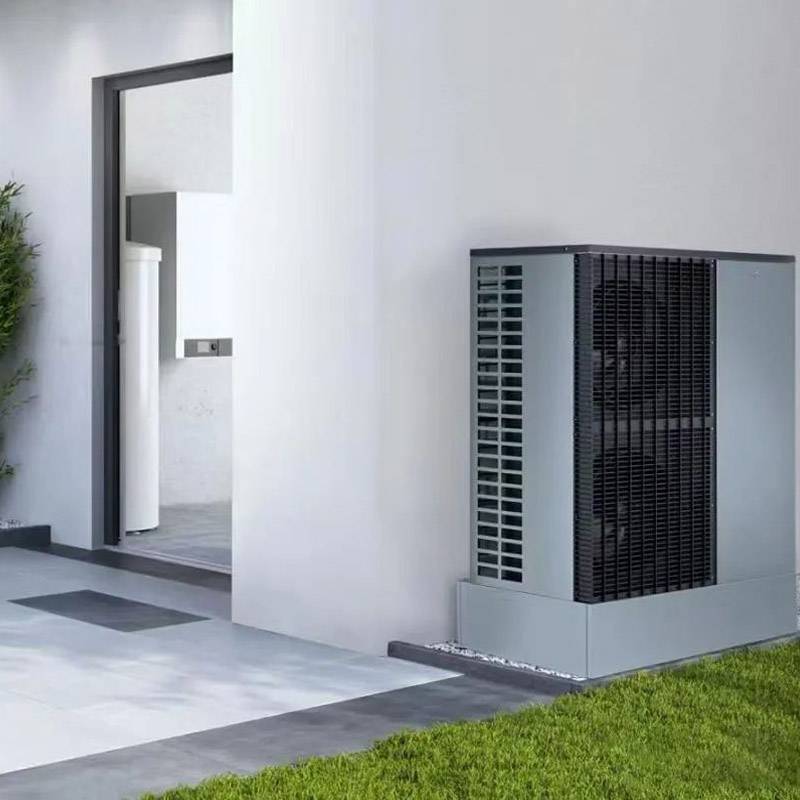
When the cold air hits, the air source heat pumps in the home are also turned on and used one after another. However, during use, some users may encounter the problem of poor heating effect of air source heat pumps, which not only affects the comfort effect, but also may increase energy consumption. In order to help everyone use air source heat pumps better and spend a warm and comfortable winter, this article Mango energy specially summarizes the following common reasons, hoping to bring some help to everyone.
1. Improper equipment selection
When selecting a heat pump, be sure to ensure that the heating power matches the heat required for room heating. If the selection is too small, it may not provide enough heat in extremely low temperatures. Generally speaking, the following basic factors need to be considered:
Climate conditions. Consider the lowest temperature and the frequency of windy and snowy weather in the area where the heat pump is installed. The lower the temperature and the more windy and snowy weather, the larger the model needs to be considered when selecting.
Building insulation and sealing conditions. The better the insulation and sealing performance, the smaller the model can be selected when selecting.
Indoor heat dissipation method. Including floor heating, radiators and fan coils, etc. If it is floor heating, the selection can be relatively small.
Compressor type. Whether the host uses "ultra-low temperature compressor" or "energy window technology" is also a factor to be considered when selecting. If these technologies are used, the selection can be relatively small.

2. Poor room insulation
Rooms with poor insulation cannot effectively retain heat. When the heat generated by the heat pump cannot be effectively preserved indoors, more energy is required to compensate for the lost heat, resulting in longer equipment operation time and increased energy consumption. In addition, rooms with poor insulation will also cause the heat pump to start and stop frequently, further reducing its service life and heating effect. In addition, it is worth noting that the floor and walls have heat absorption properties. Therefore, when the heat pump is used for the first time in winter, the floor and walls will first absorb part of the heat, and then the temperature of the entire room will gradually rise. For newly built houses, since the walls are not completely dry and have a high moisture content, they will absorb more heat. Usually, it takes several days of warm-up time to bring the room to a suitable temperature.
3. System refrigerant leakage
Refrigerant, commonly known as refrigerant, is a key substance in the heating process of air source heat pumps. In order to achieve heating, the heat pump must rely on refrigerant as a transfer medium to continuously absorb heat from the environment. However, as the use time increases, the air source heat pump may have the problem of refrigerant leakage. The reduction of refrigerant will directly lead to a decrease in the heating efficiency of the equipment, which will in turn affect the increase in the temperature of hot water.
4. The surrounding debris piled up
The working principle of the air source heat pump is to absorb low-temperature heat energy from the outside air. If debris is piled around the heat pump host and the distance is too close, it will hinder the air circulation, thereby affecting the heat exchange efficiency. Under normal circumstances, there should be at least 80 cm of open space around the host. On the front of the fan, there should be no obstacles within 2 meters under ideal circumstances. If the debris is too close, the cold air may be reflected back to the host, resulting in a significant reduction in heating efficiency. In addition, the host may absorb some dead leaves, plastic bags or other debris onto the evaporator during heat exchange. If it is not cleaned in time, it will also affect the effect of the evaporator absorbing heat.

5. Accumulation of scale impurities
Since the various components of the air source heat pump are in a hot water environment for a long time, it is easy to accumulate scale. Excessive accumulation of scale may block the pipes, resulting in poor water flow, which in turn affects the circulation efficiency of the entire system. Moreover, scale contains various complex components and has low thermal conductivity. When it accumulates in the hot water system, it will occupy the space originally belonging to hot water, causing the heating effect of the heat pump to be significantly attenuated. In addition, due to the impurities in the circulating water, the dirt formed by long-term accumulation will clog the filter, resulting in poor circulation, the inability of hot water to be transported to the end, and the temperature will not rise. Therefore, regular cleaning of these components can improve the heating effect and extend the life of the unit.
6. Untimely defrosting
When the heat exchanger of the air source heat pump is lower than the ambient temperature, condensed water will be generated on the surface of the heat exchanger, and when the ambient temperature is lower than 0 degrees, the condensed water will frost. Under normal circumstances, air source heat pumps are equipped with automatic defrosting functions. As long as the system is defrosted in time, further freezing will not occur. However, if defrosting is ineffective and causes freezing, it will affect the heating effect at the least, and the unit will be "frozen" at the worst, resulting in the unit malfunctioning and not working properly. 、

7. Compressor failure
Internal failure of the compressor may cause the refrigerant to be unable to be effectively compressed, thereby affecting the heating performance of the system. Common failure phenomena include motor coil short circuit, compressor unloading, and severe noise. Once the compressor is confirmed to be damaged, it must be replaced. In addition, if the pressure and temperature are too high during system operation, it may also cause the compressor to unload. At this time, it is recommended to wait for 4 to 24 hours before restarting the system.

8. Small heat dissipation area at the end
Common ends of air source heat pumps include floor heating, radiators, and fan coils. Taking floor heating as an example, if a 15㎡ room is filled with sofas, beds, tables and other furniture, 3 to 5㎡ will be left. In particular, some furniture and carpets without legs will cover the entire heat underneath and cannot be transmitted. The temperature transmitted cannot meet the needs of the room, and the effective heat dissipation area is naturally small. For the same reason, if the radiator is covered by clothes or blocked by wardrobes, it will also affect the heat dissipation area, resulting in the system not being hot.
In summary, there are many reasons why air source heat pumps are not hot. Only by fully understanding and solving these problems can we ensure that the heat pump system can achieve the best heating effect in winter.


